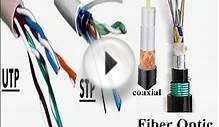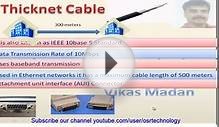
Providing commercial-grade Network wiring service throughout a business facility involves the installation of a collection of connectors, connecting hardware and cables using unshielded twisted pair (UTP), screened (foil) unshielded twisted pair (F/UTP), shielded twisted pair (STP), or multimode or singlemode fiber optics.
Unshielded Twisted Pair Wiring
UTP cables come in a variety of grades for applications from the work area in a call center to telecommunications rooms to connections to and inside data centers. Siemon Augment Category 6 UTP cable uses larger cable diameters to mitigate crosstalk in 10G BASE-T applications. Category 5e and 6 are also offered.
Screened (Foil) Unshielded Twisted Pair Wiring
Siemon’s Category 6A F/UTP system prevents alien crosstalk through a cable shield. The cable design resists deformation and allows less restrictive installation practices. The smaller cable diameter offers a greater pathway fill density. Connectors in flat, angled and keystone versions are designed with simple grounding in mind.
Shielded with Foil Twisted Pair Wiring
S/FTP cables are copper cables better suited for network wiring in buildings that are exposed to high electrical interference or frequent radio transmissions. Guaranteed to support 10G BASE-T since 1999, Siemon’s shielded Category 7 TERA is a standards approved connector that virtually eliminates crosstalk between pairs and between cables. The unique design of TERA supports cable sharing, making TERA suitable for a variety of applications.
Fiber Optic Wiring
Fiber optic network cabling is the most common network connection for data centers, though F/UTP and S/FTP are gaining popularity. Fiber optic cabling is available in singlemode and multimode forms. A mode is the path a ray of light follows while traveling down a fiber cable. As pictured, multimode fiber allows more than one mode of light. Common multimode core sizes are 50 µm and 62.5 µm. Singlemode fiber allows for only one pathway, or mode, of light to travel within the fiber. The core size is typically 8.3-10 µm.

UTP – Network Wiring Diagrams
that call for UTP, F/UTP and S/FTP copper cabling types can be used throughout local area networks (LAN).
Copper cabling standards are designated as Category 5e, Category 6, Augmented Category 6, Category 7, Class D, Class E and Class F and FA (To learn more, read “Demystifying Cabling Specifications from 5e to 7A”). This numbering system refers to the specifications defined by committees of ISO, ATM, TIA, CSA, CENELEC and JSA/JSI. The ANSI / TIA / EIA-568 standard, for example, is a telecommunications cabling standard for commercial buildings covering Category 5e, 6 and 6A.
As the categories build from 5e to 7, the speeds of data transfer across network wiring increases as does the headroom for advanced network applications. For example, while Category 5e network wiring is rated to 100 MHz, standards compliant Category 7 cables provide 600 MHz data transfer rates and Class FA go to 1000MHz.
Structured Cabling Systems
Network cabling and wiring systems rely on a variety of structured cable system components working in harmony. The weakest link in a cabling channel represents its highest performance.
Some of the components of a cabling system include: patch panels for switching functions between router for incoming and outgoing lines, horizontal cables for in-wall installation, and patch cables to connect stand alone computers to outlets and outlets to telecommunications closets.
For housing and storage of network wiring systems, products such as cable troughs, wireways, enclosure cables, rack accessories, and cabling cabinets are also installed. These components protect the wiring and equipment from dust, dirt, water, and oil while simplifying cable management.
YOU MIGHT ALSO LIKE












